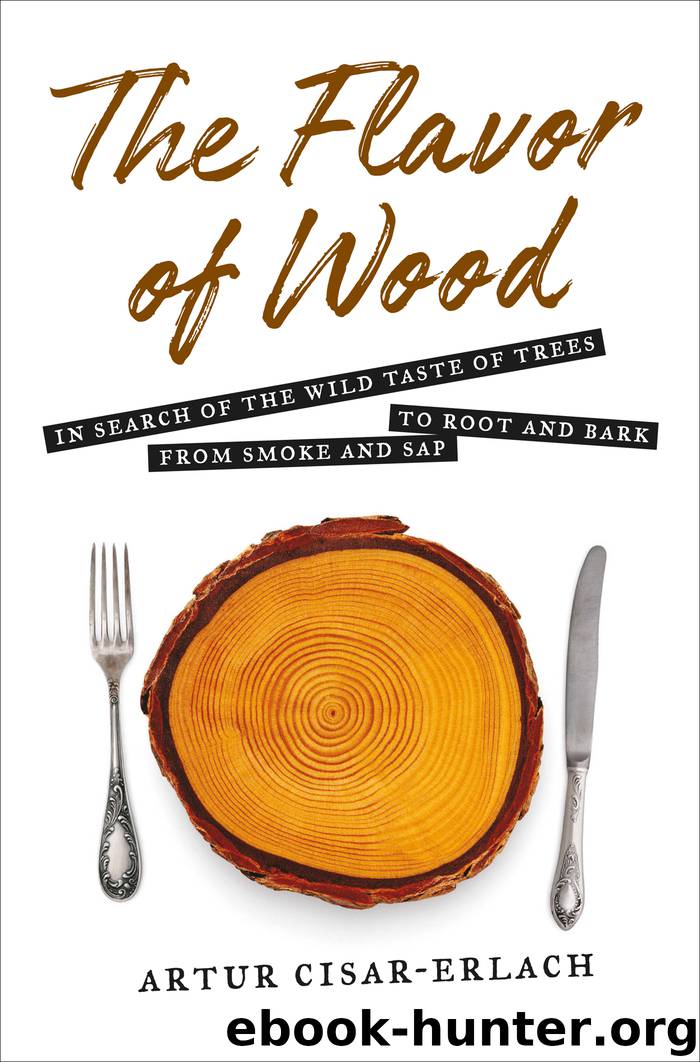The Flavor of Wood by Artur Cisar-Erlach

Author:Artur Cisar-Erlach
Language: eng
Format: epub
Publisher: The Overlook Press
Published: 2019-04-14T16:00:00+00:00
The next day, after breakfast, I packed my small carry-on and loaded it into my rental car, as I was leaving for the airport right after the interview. I would have loved to check out the canoe once again and spent the day on the canals, many of which I hadn’t explored yet, but my schedule wouldn’t allow it. Thankfully, Starick arrived slightly early to our meeting point in the hotel’s lobby, which meant I wouldn’t miss my flight, though we talked for quite a long time.
We began our appointment with a tour of the gherkin museum right in front of the hotel. The museum’s walls were made from old, large gherkin barrels and still gave off a slightly acidic smell when heated by the sun. As we walked about the museum, Starick told me of how he came to become a gherkin expert. Born into a farmer’s family and raised in Lehde, Starick’s contact with the Spreewood gherkins was practically hereditary. He can vividly remember seeing the wooden boats full of freshly harvested gherkins arriving in Lübenau, the region’s market city, where they were bought by the gherkin picklers. His personal gherkin passion would start during his vocational training as a chef in 1968 in the then German Democratic Republic, when he began to collect gherkin recipes.
Starick tells me that in “the old times”—a phrase that worried me, hinting the production methods had since changed—gherkins were pickled in large, three-and-a-half-ton oak or beech wood barrels, which had only one small opening on the side. He quizzed me as to why the opening had to be particularly small. After I warranted several wrong guesses, he told me that it was essential for the cleaning and sterilization of the barrels. They were first filled with a bit of water, and then several red-hot iron balls were thrown in through the small opening, which in turn was sealed up. The barrels were rolled up and down on a flat surface, which allowed the by-now-boiling water to sterilize the inside surface. The small opening was therefore essential: a larger one simply wouldn’t have been able to withstand the abuse. Either way, it must have been quite a spectacle to see the barrels rumbling like steamrollers across the picklers’ yards, heralding a new pickling season.
Unfortunately, Mr. Starick confirmed my strong suspicion that the pickles were no longer made in large wooden barrels. Although the barrels were still used at the time of his training as a chef, concrete, plastic, or stainless steel vats soon replaced them. He told me that there might still be some individuals that used small wooden barrels for pickling, but he didn’t know any. This was disappointing news for me, as I had been hoping that much like in the wine and spirits sector, at least the small-scale, high-quality producers still used wooden barrels to distinguish themselves from the mass-produced products.
However, as this was my chance to finally learn more about the production process of one of my favorite food items, the food I missed most while living abroad, I eagerly listened to Mr.
Download
This site does not store any files on its server. We only index and link to content provided by other sites. Please contact the content providers to delete copyright contents if any and email us, we'll remove relevant links or contents immediately.
| Culinary Biographies | Essays |
| Food Industry | History |
| Reference |
For the Love of Europe by Rick Steves(3239)
The Sprouting Book by Ann Wigmore(3054)
BraveTart by Stella Parks(2973)
Better Homes and Gardens New Cookbook by Better Homes & Gardens(2955)
The Death of the Heart by Elizabeth Bowen(2903)
Salt, Fat, Acid, Heat: Mastering the Elements of Good Cooking by Nosrat Samin(2658)
Sauces by James Peterson(2591)
Classic by Mary Berry(2504)
Solo Food by Janneke Vreugdenhil(2494)
The Bread Bible by Rose Levy Beranbaum(2473)
Ottolenghi - The Cookbook by Yotam Ottolenghi(2359)
Martha Stewart's Baking Handbook by Martha Stewart(2333)
Kitchen confidential by Anthony Bourdain(2308)
Betty Crocker's Good and Easy Cook Book by Betty Crocker(2281)
Day by Elie Wiesel(2243)
Hot Sauce Nation by Denver Nicks(2108)
My Pantry by Alice Waters(2043)
The Plant Paradox by Dr. Steven R. Gundry M.D(2040)
The Kitchen Counter Cooking School by Kathleen Flinn(2013)
